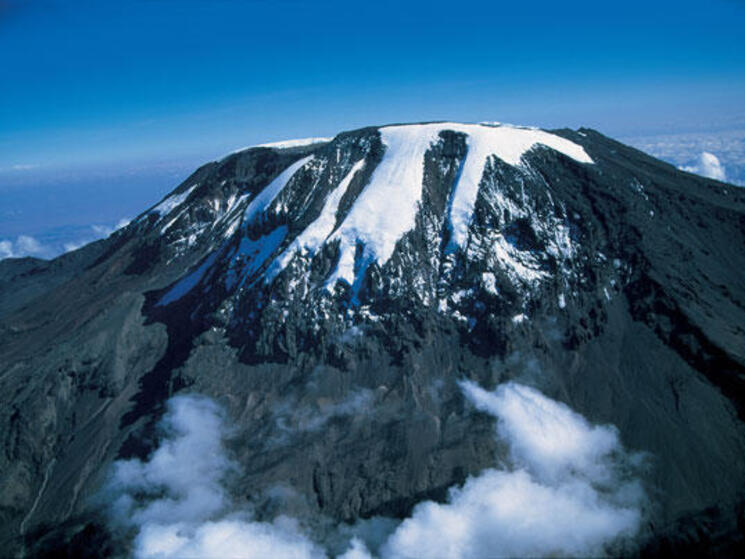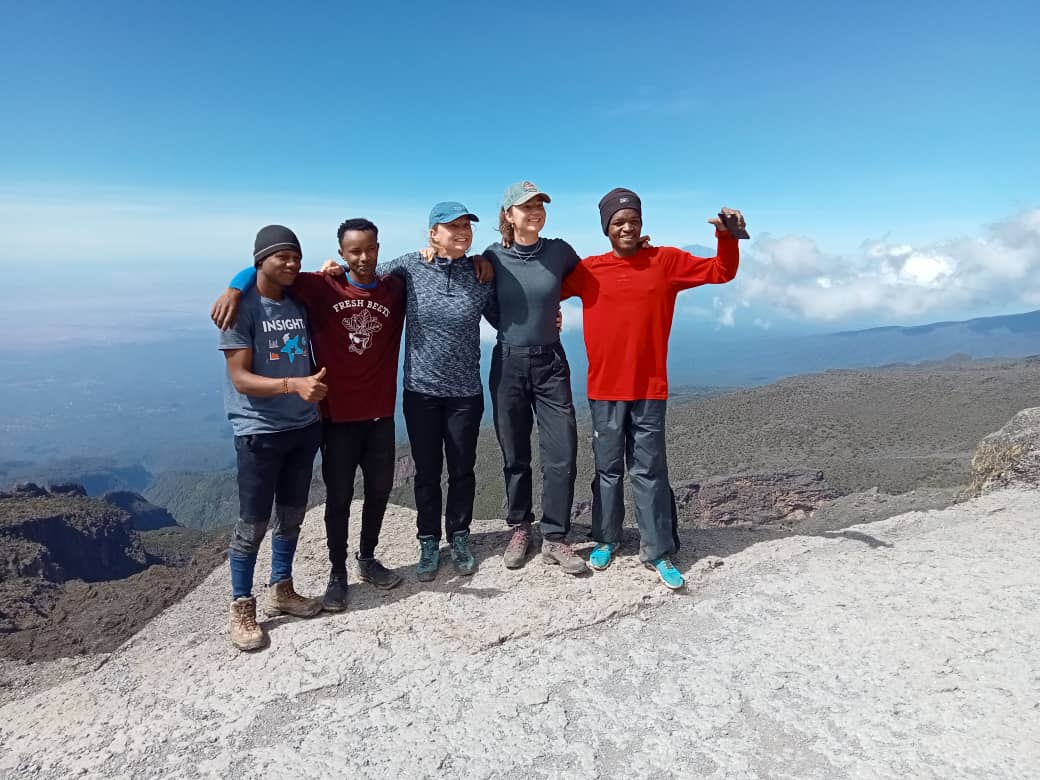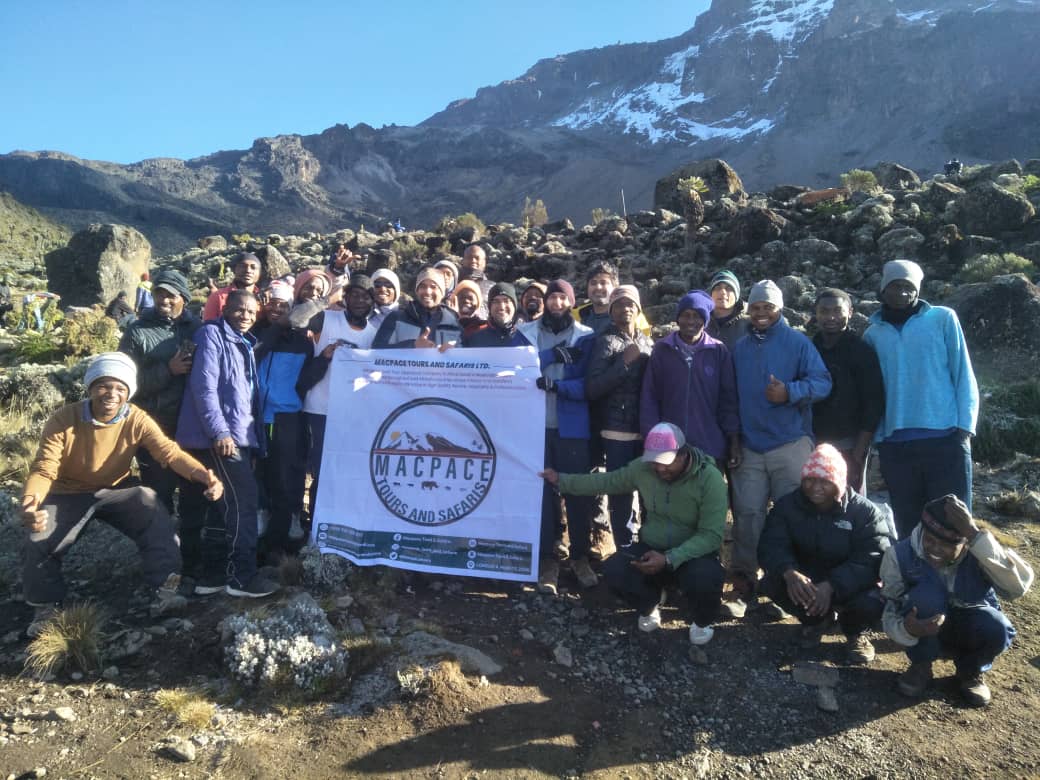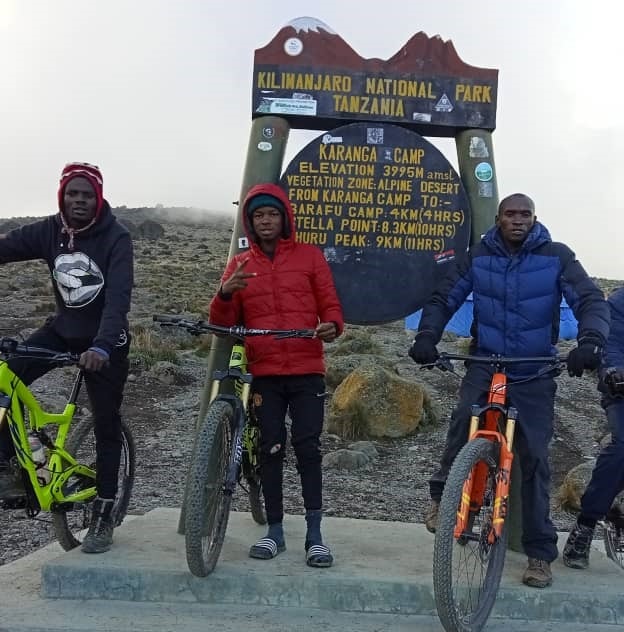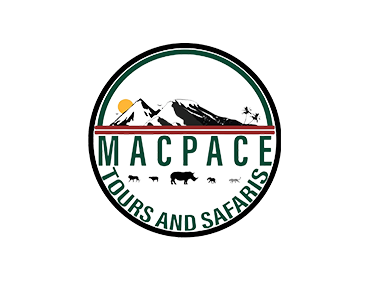Mount Kilimanjaro, the highest peak in Africa, is a dream destination for many adventurous souls. Among the various routes to conquer this majestic mountain, the Machame Route stands out as a popular choice. Known as the "Whiskey" route, it offers a challenging yet rewarding experience, allowing climbers to soak in breathtaking views and immerse themselves in the beauty of the surrounding landscapes. In this comprehensive guide, we will take you through the Machame Route, providing all the essential information you need to plan and embark on this incredible journey.
The most Popular Kilimanjaro Climbing Route
The Ultimate Guide to Climbing Mount Kilimanjaro's Machame Route
Mount Kilimanjaro, located in Tanzania, is not only the highest peak in Africa but also one of the most iconic mountains in the world. Standing tall at 5,895 meters (19,341 feet), it attracts thousands of climbers every year who seek the ultimate challenge and the unparalleled reward of reaching its summit. Among the various routes available, the Machame Route is renowned for its stunning scenery, diverse landscapes, and excellent acclimatization profile. In this guide, we will delve into the details of the Machame Route, offering insights into the day-by-day itinerary, tips for a successful climb, safety measures, accommodation options, and much more. Whether you are an experienced mountaineer or a novice adventurer, this guide will equip you with the knowledge and preparation needed to make your Kilimanjaro dream a reality.
Overview of the Machame Route.
The Machame Route, often referred to as the "Whiskey" route due to its challenging nature, starts on the southwestern side of Mount Kilimanjaro. It is a camping route, meaning that climbers will spend their nights in tents along the way. The journey begins at Machame Gate, located at an elevation of 1,800 meters (5,900 feet), and follows a winding trail through the lush rainforest. As the days progress, the landscape transitions from rainforest to moorland, semi-desert, and finally, the barren alpine desert near the summit.
One of the key advantages of the Machame Route is its excellent acclimatization profile. The route allows climbers to gradually ascend to higher altitudes, giving their bodies time to adjust to the decreasing oxygen levels. This helps reduce the risk of altitude sickness and improves the chances of a successful summit attempt. The Machame Route also includes strategic acclimatization days, such as the hike to Lava Tower and the overnight stay at Barranco Camp, which further aid in the adaptation process.
While the Machame Route is considered challenging, it is suitable for climbers with a good level of fitness and determination. The trail involves long and steep ascents, as well as descents, which can be physically demanding. Climbers must be prepared for the rigors of high-altitude trekking and be mentally resilient to endure the physical and mental challenges that come with climbing Kilimanjaro. Proper physical training, mental preparation, and a positive mindset are crucial for a successful and enjoyable experience on the Machame Route.
Day-by-Day Machame Route Itinerary.
The Machame Route typically spans six or seven days, allowing climbers ample time to acclimatize and increase their chances of reaching the summit. Each day of the itinerary presents its own unique challenges and rewards, offering a memorable journey to the Roof of Africa. Here is a detailed breakdown of the day-by-day itinerary for the Machame Route:
Day 1: Machame Gate to Machame Camp
- Elevation: 1,830 meters (6,000 feet) to 3,050 meters (9,950 feet)
- Distance: 11 kilometers (7 miles)
- Hiking Time: 5-6 hours
- Habitat: Montane Forest
The adventure begins at Machame Gate, where climbers complete the necessary registration procedures. From there, the trail winds through the enchanting rainforest, offering glimpses of diverse flora and fauna. The hike to Machame Camp provides a gradual ascent, allowing climbers to acclimate to the increasing altitude. The campsite, nestled in the montane forest, offers a serene setting for rest and overnight stay.
Day 2: Machame Camp to Shira Camp
- Elevation: 3,050 meters (9,950 feet) to 3,850 meters (12,600 feet)
- Distance: 5 kilometers (3 miles)
- Hiking Time: 4-5 hours
- Habitat: Moorland
After a hearty breakfast, climbers leave the rainforest behind and continue their ascent towards Shira Camp. The trail takes them along steep rocky ridges and through valleys, gradually revealing breathtaking panoramic views of Mount Meru, Shira Plateau, and Kibo Peak. The moorland terrain offers a unique and otherworldly experience, as climbers trek across vast expanses dotted with heather plants. Shira Camp, perched at an elevation of 3,850 meters (12,600 feet), provides a picturesque resting place for the night.
Day 3: Shira Camp to Lava Tower to Barranco Camp
- Elevation: 3,850 meters (12,600 feet) to 4,000 meters (13,000 feet)
- Distance: 10 kilometers (6 miles)
- Hiking Time: 5-7 hours
- Habitat: Moorland
On this day, climbers embark on an essential acclimatization hike. The trail leads eastward, passing through a junction that leads to Lava Tower, a distinctive rock formation known as the "Shark's Tooth." This higher elevation allows climbers to acclimate further before descending to Barranco Camp. The campsite, nestled in the valley beneath the towering Barranco Wall, offers stunning views and a tranquil atmosphere for a well-deserved rest.
Day 4: Barranco Camp to Karanga Camp to Barafu Campp
- Elevation: 4,000 meters (13,000 feet) to 4,600 meters (15,100 feet)
- Distance: 9 kilometers (6 miles)
- Hiking Time: 6-8 hours
- Habitat: Alpine Desert
After breakfast, climbers tackle the formidable Barranco Wall, a thrilling ascent that showcases their climbing skills and determination. Beyond the wall, the trail weaves through ridges and valleys, culminating in a steep climb to Karanga Camp. Here, climbers enjoy a hot lunch and a brief rest before continuing their ascent to Barafu Camp. Located at an elevation of 4,600 meters (15,100 feet), Barafu Camp serves as the launching point for the summit push and offers awe-inspiring views of the surrounding landscape.
Day 5: Barafu Camp to Summit to Mweka Hut
- Elevation: 4,600 meters (15,100 feet) to 5,895 meters (19,341 feet) and descent to 3,100 meters (10,170 feet)
- Distance: 5 kilometers (3 miles) ascent / 12 kilometers (8 miles) descent
- Hiking Time: 7-8 hours ascent / 4-6 hours descent
- Habitat: Arctic
The day begins in the early morning hours, typically between midnight and 2 a.m., as climbers embark on the final push to the summit. The route leads through the Rebmann and Ratzel glaciers, ascending through scree slopes to Stella Point, situated on the crater rim. From Stella Point, climbers continue along the crater rim to Uhuru Peak, the highest point on Mount Kilimanjaro and the African continent. Witnessing the sunrise from the summit is a truly unforgettable experience. After capturing the moment and savoring the achievement, climbers begin their descent to Mweka Hut, located at an elevation of 3,100 meters (10,170 feet), where they rest and rejuvenate.
Day 6: Mweka Hut to Mweka Gate
- Elevation: 3,100 meters (10,170 feet) to 1,650 meters (5,410 feet)
- Distance: 9 kilometers (6 miles)t
- Descending Time: 3-4 hours
- Habitat: Montane Forest
On the final day of the trek, climbers bid farewell to the mountain as they descend through the enchanting montane forest. The descent takes approximately 3-4 hours, bringing climbers to Mweka Gate, where they sign out and receive their well-deserved certificates of achievement. From the gate, climbers are transferred back to their hotel in Moshi, marking the end of an incredible journey
Kilimanjaro Machame Route Best Time
The best time to climb the Machame Route Kilimanjaro is during the dry season, which typically runs from late June to October, and from December to February. During this time, the weather is generally drier and more stable, with clear skies and good visibility. This makes for better climbing conditions and better views of the surrounding landscape. However, it's worth noting that the Machame Route can be climbed year-round, and some people choose to climb during the rainy season (March to May and November), when the mountain is less crowded and the landscape is lush and green. However, climbing during the rainy season can be more challenging due to the wet and muddy conditions on the trail.
Kilimanjaro Machame route cost
The cost of the Machame Route for climbing Mount Kilimanjaro varies depending on several factors such as the number of days
on the mountain, the level of service and amenities provided by the tour operator, and the
size of the group.
On average cost, The 6-7 days Kilimanjaro Machame Route climb ranges from $1,500 to $3,500
per person. However, the price can be higher or lower depending on the factors mentioned
above.
It's important to note that the cost of the Machame Route climb typically includes services
such as park fees, guide and porter fees, accommodation, meals, and equipment. However, it
may not include additional expenses such as flights, visa fees, and travel insurance.
When planning your Kilimanjaro Machame Route Climb, please do not hesitate to ask for more
information from Macpace Tours and Safaris Ltd, because we are the most reputable and experienced
tour company that offers fair pricing and high-quality services.
Kilimanjaro Machame route Packages
We offer the best Machame Route packages from 6-7days to suit your budget, which typically include the following:
- Trekking permits and park fees: Before starting the trek, you'll need to obtain permits and pay park fees. Most packages include these costs.
- Transportation: Packages may include transportation to and from the mountain, as well as transportation to the starting point of the trek.
- Accommodation: Most packages include accommodation in tents or mountain huts along the trekking route.
- Meals and snacks: Most packages include meals and snacks during the trek, prepared by a cook or chef.
- Guides and porters: A guide will lead the trek and ensure your safety, while porters will carry your gear and equipment.
- Gear rental: Some packages include rental of equipment such as sleeping bags, hiking poles, and waterproof jackets.
- Pre-trek briefing: A pre-trek briefing is usually provided to give you an overview of what to expect during the trek.

